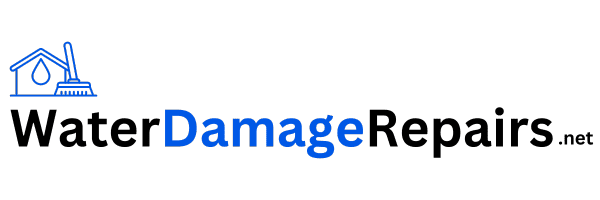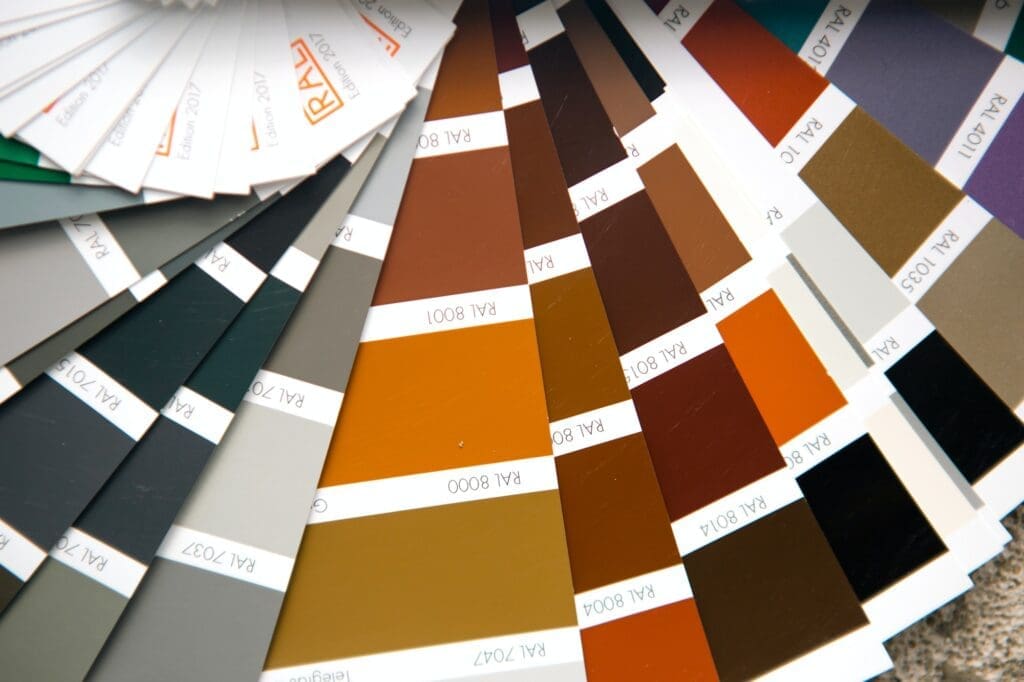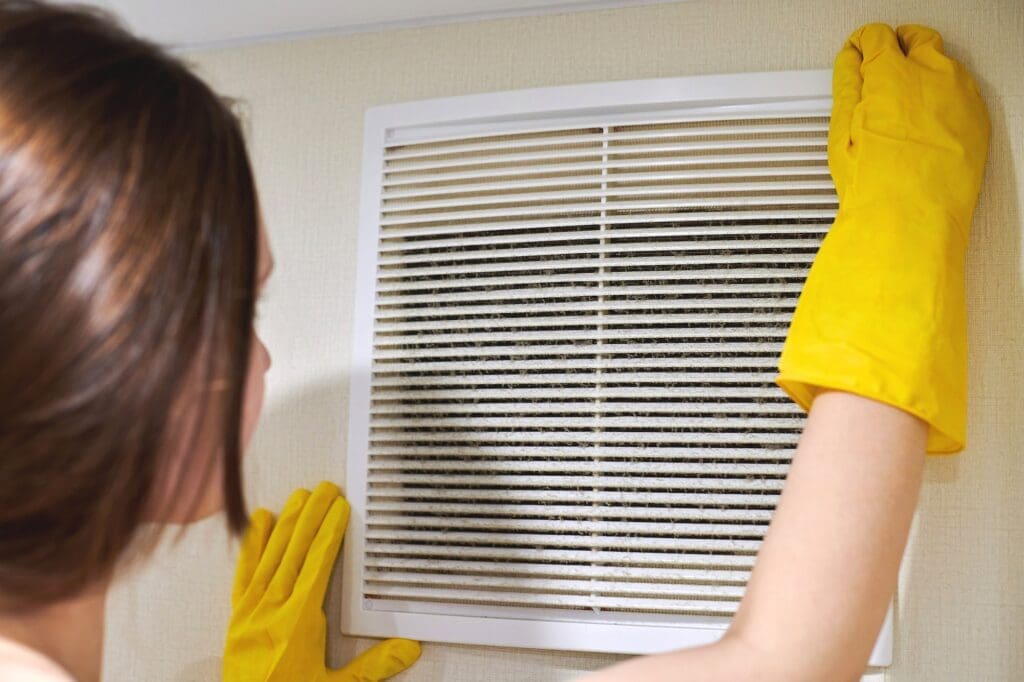Water Damage Woes: How To Prevent And Repair
As a water damage restoration expert, I’ve seen it all. From flooded basements to soggy carpets and ruined family heirlooms – the aftermath of water damage can be devastating.
But what if I told you that with just a bit of knowledge and preparation, you could potentially save yourself from experiencing these heart-wrenching scenarios?
In this article, we’ll dive into some practical steps on how to safeguard your home against potential water disasters and tackle any repairs should they arise.
I know firsthand how rewarding it feels when we help others in need; it’s an innate desire within us all. And taking care of our homes is one way we serve those who matter most – our families and friends!
So let’s roll up our sleeves together as we explore the world of water damage prevention and repair. By becoming well-versed in these essential skills, not only will you protect your own home but also stand ready to lend a helping hand to loved ones facing similar issues.
After all, isn’t that what life’s all about?
Identifying Common Sources Of Water Damage
Water damage can sometimes feel like an unstoppable force of nature, wreaking havoc on your home and leaving you feeling helpless.
As a water damage restoration expert, I understand how overwhelming it can be to face such disasters. But don’t worry! The first step in tackling this issue is identifying causes of water damage so that you can take preventive measures and avoid costly repairs down the line.
By reviewing policies around potential sources of water issues, you’ll not only protect your property but also serve as a responsible member of your community. Common sources of water damage include leaky pipes, malfunctioning appliances, clogged gutters or drains, and natural weather events such as heavy rain or snowmelt.
Addressing these issues before they escalate into larger problems will save time, money, and heartache for both yourself and those who may rely on you. Remember: knowledge is power when it comes to preventing water-related woes!
Now that we know what to look out for let’s dive deeper by understanding the different types of water damage so that we’re better equipped to handle whatever life throws our way.
Understanding The Different Types Of Water Damage
Now that we’ve discussed how to prevent and repair water damage, let’s dive a little deeper into understanding the different types of water damage.
As your friendly neighborhood water damage restoration expert, I can’t emphasize enough how important it is for you to be able to assess risks and properly identify what type of water damage you’re dealing with.
You see, not all water damage is created equal – there are actually three categories: clean water, gray water, and black water.
Each category has its own level of contamination which determines the appropriate cleanup method and testing equipment needed.
Clean water comes from sources like rainwater or leaks from pipes and appliances.
Gray water contains contaminants but isn’t as dangerous as black water; this typically comes from overflowing washing machines or dishwashers.
Black water, on the other hand, poses serious health risks due to bacteria and pathogens found in sewage backups or floodwaters.
Now that we have a better grasp on these classifications, we’ll be more prepared when faced with any kind of unwanted H2O invasion in our homes!
But remember, no matter the type of water damage you encounter, always approach each situation with caution while prioritizing safety above all else.
Up next: knowing when it’s time to call in reinforcements (aka professionals) to help manage the mess.
Knowing When To Call A Professional
So, you’re a superhero now. You’ve managed to tackle every water damage issue in your home all by yourself, and there’s nothing left for the professionals to do, right?
Well, not exactly. As much as we love to save the day (and our wallets) by handling things ourselves, there comes a time when assessing damage and seeking help from an expert is absolutely necessary.
The truth is that some water damage situations are just too complex or dangerous for us mere mortals to handle alone. Not only do professionals have advanced tools and techniques at their disposal, but they also possess invaluable knowledge about how best to address specific types of water-related issues.
So if you find yourself struggling with stubborn mold growth or suspecting hidden structural damage within your walls, it’s definitely worth considering reaching out for professional assistance. Remember: knowing when to call for backup isn’t a sign of weakness – it’s actually one of the smartest moves you can make!
Now that we’ve established the importance of enlisting expert help in certain scenarios let’s dive into how you can develop a home maintenance plan that will keep future water woes at bay.
Developing A Home Maintenance Plan
Developing a home maintenance plan is essential in preventing water damage and ensuring the longevity of your home. As a water damage restoration expert, I can’t stress enough how important it is to be proactive in maintaining your property.
Establishing priorities and creating checklists are crucial steps in developing an effective plan that not only addresses current issues but also anticipates potential problems down the road. Let me share with you some key aspects to consider when developing your home maintenance plan:
- Seasonal tasks: Be mindful of seasonal changes and adjust your maintenance activities accordingly. For instance, clean gutters and downspouts during fall to prevent ice dams in winter.
- Regular inspections: Conduct regular inspections of critical areas such as roofs, plumbing systems, and basements to identify any signs of wear or potential leaks.
- Address minor issues promptly: Don’t delay fixing small problems; they can quickly escalate into major headaches if left unattended.
By incorporating these elements into your home maintenance plan, you’ll be better equipped to handle unexpected situations while minimizing repair costs. Remember that prevention is always better than cure – so stay vigilant and keep a close eye on the condition of your home.
Now that we have discussed establishing an effective maintenance routine let’s move forward by taking necessary safety precautions for further protection against water-related incidents.
Taking The Necessary Safety Precautions
Safety and security should be a steadfast staple when tackling troublesome water damage. Before diving into the depths of disaster, it’s important to prioritize taking necessary safety precautions to protect ourselves and our homes. Installing alarms and regularly testing systems are vital steps in staying vigilant against potential problems.
To help you remember these crucial safety measures, here’s a simple table for reference:
| Safety Precaution | Reason |
|---|---|
| Install Alarms | To detect early signs of water leaks or flooding. |
| Test Systems | To ensure all alarms and devices are functioning properly. |
| Wear Protective Gear | To safeguard yourself from harmful substances during repair work. |
Now that we’ve covered essential safety tips, let’s move forward with investigating and locating the source of damage as this will aid us further in preventing future mishaps.
Investigating And Locating The Source Of Damage
Now that you’ve taken the necessary safety precautions, it’s time to dive into assessing the severity of water damage and locating its source. Timely identification of the root cause can save you from further headaches and potential costly repairs down the line. Remember, we’re all in this together – helping each other out is what makes our community strong!
When investigating your property for water damage:
- Assessing severity
- Look for visible signs like discoloration, swelling or peeling paint, warping floors and buckling walls.
- Check hidden areas such as crawl spaces, basements, attics and behind cabinets where moisture may be trapped.
- Locating source
- Inspect plumbing systems for leaks: faucets, pipes under sinks, hose connections and toilet tanks.
- Examine exterior sources including roof issues (missing shingles), gutter blockages or poor landscaping drainage.
As a water restoration expert would say – knowledge is power! By correctly identifying the extent of damage and getting to know its origin point, you’ll be better equipped to tackle it head-on with confidence.
After all, protecting our homes and loved ones from harm should always be at the top of our priority list.
With these insights on assessing severity of water damage and locating its source in mind, let’s keep up the momentum by learning how to extract standing water effectively while removing contaminated materials safely.
Extracting Standing Water And Removing Contaminated Materials
Now that we’ve covered how to prevent and repair water damage, let’s dive into the important task of extracting standing water and removing contaminated materials. The sooner you deal with this issue, the better your chances are at preventing mold growth and minimizing further damages. Trust me, as a water damage restoration expert, I cannot emphasize enough the importance of acting quickly and efficiently in these situations.
First things first: safety comes first! Always ensure there is no risk of electrical shock before entering any flooded areas.
Once it’s safe to proceed, start by removing as much standing water as possible using wet vacuums or submersible pumps. This will help prevent mold from taking root and make drying carpets easier down the line.
Next, remove all soaked items like furniture, upholstery, area rugs, and personal belongings – they may be salvageable after thorough cleaning but keeping them around can hinder the drying process for other affected materials.
Remember that serving others starts by creating a safe space where everyone involved feels secure about their surroundings. And now that we’ve set the stage for successful extraction efforts, it’s time to prepare ourselves for our next challenge – setting up the right environment for drying and dehumidifying.
Setting Up The Right Environment For Drying And Dehumidifying
They say that Rome wasn’t built in a day, and the same goes for drying out your water-damaged space. It’s important to create the right environment that encourages effective drying and dehumidifying to prevent further damage or mold growth. Monitoring humidity levels is crucial for keeping things under control.
Let me share some tips on setting up the ideal conditions for this process.
- Keep it contained: Close all windows and doors to the affected area to help maintain a consistent temperature and promote faster evaporation.
- Circulate air: Use fans strategically placed around the room to keep the air moving, which helps speed up moisture removal from surfaces.
- Use a dehumidifier: A high-quality dehumidifier will work wonders in reducing moisture levels within the space, making it harder for mold and mildew to thrive.
Remember, patience is key when dealing with water damage restoration – don’t rush into repairs before everything has thoroughly dried out! By following these steps diligently, you’ll be well on your way towards creating an optimal environment for drying and dehumidification.
As we move forward together in this journey of recovery, let’s now turn our attention towards repairing those damaged areas so they can look like new once more.
Repairing And Refinishing Damaged Areas
I’m here to help you take on those water damage woes! Sanding, priming, painting, staining, sealing, patching, replacing, repairing, re-grouting, cleaning, replastering, caulking, moisture-proofing, odor removal and insulating are all important components of repairing and refinishing damaged areas. Let me walk you through each step so you can get your place back in shape in no time! I’ll make sure you know what needs to be done and how to do it correctly.
Sanding
We’ve all been there, haven’t we? Staring at a water-damaged surface and wondering how on earth we’re going to restore it to its former glory.
Well, let me tell you a little secret: sanding is your best friend in these situations. As a water damage restoration expert, I can assure you that mastering proper sanding techniques will make all the difference when repairing and refinishing damaged areas.
It’s not just about removing the old finish or smoothing out rough patches; it’s also about creating an ideal surface for new paint or stain to adhere to. Through careful surface preparation, you’ll be able to transform your damaged surfaces into something beautiful again – and isn’t that what serving others is all about?
So go ahead, grab that sander with confidence, and show those water-damaged spots who’s boss!
Priming
Now that you’ve conquered sanding, it’s time to move on to the next crucial step in repairing and refinishing damaged areas: priming.
Trust me; as a water damage restoration expert, I can’t stress enough how important this stage is when restoring surfaces.
Priming is all about correcting moisture issues and sealing cracks so that your new paint or stain will adhere properly and last for years to come.
It not only gives you an even surface but also forms a strong bond with whatever finish you choose.
Plus, knowing that you’re serving others by transforming their damaged spaces into beautiful ones again will make every brushstroke feel immensely rewarding!
So go ahead, grab that primer, and give those sanded surfaces the solid foundation they deserve!
Painting
Now that we’ve laid the perfect foundation with priming, it’s time for the grand finale – painting!
As a water damage restoration expert, I can’t wait to share some fantastic tips and tricks on applying paint smoothly and efficiently.
The right painting techniques will transform those damaged spaces into beautiful havens for serving others once more.
Remember, color selection plays an essential role in setting the mood of any space; choose wisely to create the desired ambiance.
Together, let’s bring life back into these areas one brushstroke at a time!
Implementing Preventative Measures To Minimize Future Damage
Now that we’ve discussed the importance of understanding water damage and how to repair it, let’s dive into some preventative measures you can take to minimize future problems.
As someone who has seen countless homes suffer from water damage, I cannot stress enough the importance of proactive steps in safeguarding your property. Trust me when I say that taking these precautions will not only save you time but also a lot of heartache in the long run.
One effective way to prevent water damage is by installing alarms that detect leaks or floods early on. These devices are relatively inexpensive and easy to install, yet they can potentially save you thousands of dollars in repairs down the line.
Additionally, make sure you’re regularly inspecting pipes for signs of wear or corrosion; this simple step could help you catch potential issues before they turn into major catastrophes.
Remember, being vigilant about maintaining your home’s infrastructure shows genuine care for both yourself and others around you – after all, no one wants their neighbor’s house flooding due to neglected maintenance!
So go ahead and take action now: invest in those leak detectors and keep an eye on your pipes – your wallet (and possibly your neighbors) will thank you later!
Frequently Asked Questions
How Can I Determine The Potential Costs Of Water Damage Repairs Before Contacting A Professional?
Imagine this: you’ve just come home from a long day at work, ready to unwind and relax, when you notice an unsightly water stain on your ceiling or a puddle forming near your washing machine. Your heart sinks as you realize that dreaded water damage has struck your humble abode.
As someone who’s been in the water damage restoration field for years, let me assure you that early detection is crucial in minimizing those repair costs. One way to safeguard your home is by installing moisture barriers – these handy tools will help keep unwanted dampness at bay.
But even with preventive measures in place, accidents can still happen, and it’s important to have an idea of potential costs before reaching out to professionals like us. In order to get a rough estimate, consider factors such as the extent of the damage (think square footage), affected materials (drywall versus hardwood flooring), and whether any additional services are needed (mold remediation or furniture removal).
Remember, we’re all here to serve one another so don’t be afraid to ask for help in tackling those pesky water woes!
Are There Any Specific Insurance Policies Or Coverage Options That Can Help Protect My Home From Water Damage Expenses?
Absolutely! When it comes to protecting your home from water damage expenses, specific insurance policies and coverage options can be a lifesaver.
I’d recommend looking into flood cover as part of your home insurance policy – this will give you peace of mind in case of flooding or heavy rainstorms.
Additionally, consider investing in leak prevention measures like smart water sensors, which not only help detect leaks early on but may also qualify you for discounts on your insurance premium.
As a water damage restoration expert, I’ve seen firsthand how having the right protection in place can make all the difference when faced with costly repairs—and knowing that you’re helping others by safeguarding their homes too just makes it even more rewarding!
What Are Some Signs That My Home’s Plumbing System May Be At Risk For Causing Water Damage, Even If There Are No Visible Leaks Or Damage Currently?
Don’t let your plumbing system be the wolf in sheep’s clothing! Identifying warning signs early on and performing preventative maintenance can save you from potential water damage nightmares.
As a water damage restoration expert, I can tell you that even if there are no visible leaks or damage currently, subtle clues might indicate trouble brewing behind the scenes.
Some red flags to watch out for include: unusual noises coming from pipes, persistent damp spots on walls or floors, unusually high water bills, and slow draining sinks or tubs.
By paying attention to these hints and taking action promptly, not only will you be protecting your home but also serving others by preventing any potential harm caused by unchecked water damage in your living spaces.
So keep an eye on those sneaky signals- it’s always better to be safe than sorry!
How Can I Effectively Communicate With Contractors During The Repair Process To Ensure That My Home Is Being Restored To My Satisfaction?
When it comes to effectively communicating with contractors during the repair process, I can’t stress enough how important it is to be proactive and stay involved every step of the way.
Start by checking references before hiring a contractor to make sure they have a solid track record of satisfied clients.
Once you’ve chosen your contractor, work closely with them on securing permits and making decisions about materials and timelines.
Keep an open line of communication throughout the project so that any concerns or changes can be addressed promptly – remember, this is your home we’re talking about!
By actively participating in the restoration process and fostering a collaborative relationship with your contractor, you’ll ensure that your home is restored not only to meet building codes but also to your personal satisfaction.
Are There Any Specific Home Construction Materials Or Design Elements That Can Help Reduce The Likelihood Of Water Damage Occurring In The First Place?
When building or renovating our homes, we can take a proactive approach to reduce the likelihood of water damage through careful selection of construction materials and design elements.
Damp proofing and flood proofing are two such techniques that we should consider incorporating into our home designs.
As a water damage restoration expert, I’ve seen firsthand how these methods make all the difference in preventing long-term problems caused by excess moisture.
By choosing materials like concrete blocks with added waterproofing agents for your foundation and opting for elevated flooring systems, you’re not only protecting your home but also serving others by preserving the environment around it.
Ensuring proper drainage systems and clever landscaping designs further help mitigate potential water issues, keeping your beloved sanctuary safe from harm’s way while giving you peace of mind.
Conclusion
In conclusion, water damage is a homeowner’s worst nightmare. With the potential for costly repairs and extensive property loss, it’s crucial to be proactive in protecting your home from this soggy situation.
By assessing the possible expenses of water damage repairs beforehand, investing in appropriate insurance coverage options, and staying vigilant for signs that your plumbing system may be at risk, you can save yourself a boatload of trouble down the line.
During the repair process, communication with contractors is key to ensuring that your precious abode is restored to its former glory—or even better! Don’t hesitate to voice your concerns or ask questions; after all, it’s your castle they’re working on.
And if you’re building a new home or considering renovations, keep an eye out for materials and design elements that can reduce the likelihood of water damage occurring in the first place.
Remember: when it comes to water damage woes, an ounce of prevention is worth a pound of cure (or perhaps more accurately—a gallon!). Stay informed about potential risks and mitigation strategies so you can sail smoothly through any stormy weather life throws at your humble abode.



